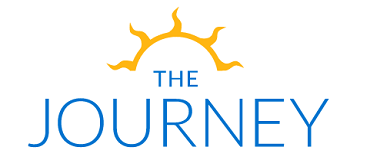Time tracking software is a tool that assists businesses, organizations, and individuals in tracking the amount of time spent on various activities and tasks. Typically, the software tracks the amount of time spent on each task and generates a full report on the time spent on each project, task, or activity. Individual employees, departments, or teams can also utilize the software to track their time.
Time monitoring software major aim is to offer organizations a more accurate picture of how time is spent and to assist in identifying areas where work processes can be enhanced, efficiency improved, and productivity boosted. The program can also be used to track employee performance, distribute resources more efficiently, and track the development of projects.
Time tracking software for employees comes in a variety of flavors, ranging from simple timekeeping applications to comprehensive project management software. The software chosen will be determined by the organization’s needs, the sort of work conducted, and the size of the organization.
When selecting time-tracking software, keep the following considerations in mind:
Ease of use: The program should be simple to use and comprehend, especially for staff who are not tech-savvy.
Flexibility: The software must be adaptable to the changing needs of the organization.
Integration with other tools: The software should be compatible with the organization’s other tools and systems, such as project management software and accounting systems.
Capabilities for reporting: The software should be able to create detailed reports on the time spent on each task and project, as well as provide insight into areas where work processes can be improved.
Cost: The cost of the software should be affordable and in line with the organization’s budget.
Overall, time-tracking software is a great tool for businesses looking to streamline work processes, increase efficiency, and boost productivity. Organizations may make better-informed decisions regarding resource allocation, monitor employee performance, and guarantee projects are finished on schedule by employing software to track the time spent on various tasks and projects.
Use of time-tracking software in organizations:
Time monitoring software is a tool that assists businesses, organizations, and individuals in tracking the amount of time spent on various activities and tasks. With increased demands on our time and attention in today’s work world, time management has become even more crucial. It is possible to monitor the amount of time spent on certain jobs, projects, and activities using time-tracking software for employees, and to utilize this information to optimize work processes, boost efficiency, and improve productivity.
One of the most significant advantages of time monitoring software is that it provides a more accurate picture of how time is spent. This information is especially useful in project management, where it is critical to determine the time required to perform activities as well as the time actually spent on these tasks. Organizations can find areas where they can optimize work processes, improve efficiency, and minimize the time required to accomplish tasks by tracking the time spent on tasks and projects. This data can also be used to track employee performance, identify areas for more training, and make more informed decisions about personnel levels and resource allocation.
Another advantage of time-tracking software is that it helps firms understand the costs associated with various tasks and projects. This data can be utilized to optimize budgets, find cost-cutting opportunities, and make more informed decisions about project and resource allocation. Businesses can find areas where they can minimize the amount of time necessary to accomplish operations by monitoring time spent on tasks, which can lead to better efficiency and lower costs.
Furthermore, time-tracking software can be used to monitor remote workers and guarantee that they are working the hours for which they are paid. This is especially significant in firms when workers work from home or in different time zones. Organizations may guarantee that remote workers are working the hours they are paid for and are not overworking or underworking by tracking the time spent on tasks and activities.
Another advantage of time-tracking software is that it provides firms with a more accurate view of different employees’ responsibilities. This data can be utilized to optimize resource allocation, reduce burnout risk, and guarantee that personnel is not overworked. Organizations can discover areas where staff is not being employed to their maximum capacity by monitoring the time spent on tasks and projects and making changes to enhance resource allocation.
Finally, time-tracking software can be used to track the development of projects and keep them on schedule. Organizations can discover areas where they are behind schedule and make modifications to guarantee that the project is completed on time by tracking the time spent on different tasks. This data can also be utilized to highlight locations where more resources may be needed to complete the project on schedule.
To summarise, time monitoring software is a helpful tool for enterprises, organizations, and individuals seeking to optimize work processes, increase efficiency, and boost productivity.
Organizations may make better-informed decisions about resource allocation, reduce the risk of burnout, and guarantee that remote workers perform the hours that they are paid for by providing a more accurate picture of how time is spent. Organizations may guarantee that they are on track by monitoring project progress and making changes to ensure that projects are completed on time.
